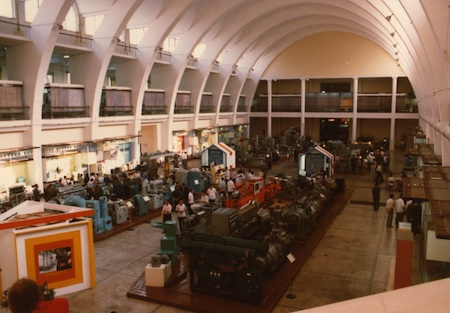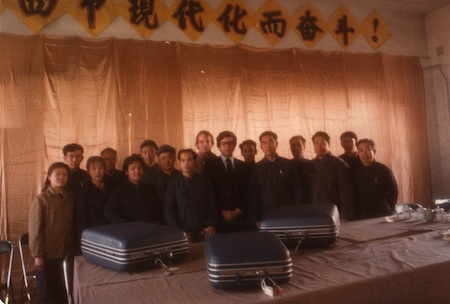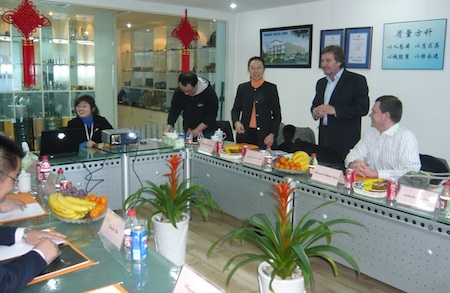Our History
History
China Performance Group (CPG), a fully owned division of TransContinental Trade & Finance Corporation, started operations in 1978. The early history of the company is closely intertwined with the story of China’s emerging export business as we explain below.
Background
CPG‘s sourcing procedures were originally intended for internal use only. They were created and developed to address sourcing challenges and to facilitate and streamline the sourcing process of the products the company bought in China for resale to the US market. The procedures addressed sourcing challenges, which changed over time. Below is a summary of the timeline of the sourcing environment CPG was addressing.
1970’s
During the seventies, China’s export business was primarily commodities driven and it was very small in volume, about $100 million per year to the US. The Canton Fair was the main export business venue, for China where buyers met sellers and contracts were signed. It took place twice a year, lasting a month per session.
All importers of China products had to work through a rigid Foreign Trade Corporation system, in which Foreign Trade Corporations (FTC) were centralized in Beijing and grouped by specific product categories (i.e. Machinery, textiles, chemicals etc.). They did not grant access to factories and all quality control had to be conducted off-site through a sample verification process. The speed of processing an order was an issue, as China took at least twice as long to ship an order as neighboring Taiwan and South Korea.
On the other hand the FTCs were reliable and trustworthy, fraud was not an issue and factory pricing was excellent.
CPG was an early believer in China’s potential for exporting manufactured goods, and it pioneered a number of changes with the FTCs including:
1. Developing and broadening the products range
2. Improving trade parameters and payment terms
3. Shortening delivery times
4. Gaining better access to the factories for quality assurance

1980’s
In the early eighties, the FTCs started to decentralize geographically by allowing provincial and regional FTCs to deal directly with western buyers and by loosening management of product categories. (i.e., Suddenly one could import beer through Machimpex, not just machinery.) As controls loosened so did accountability and buyers had to increasingly be wary of product quality and order performance.
Exports to the US grew to $8 billion by 1989 and China started to be recognized as the country of choice for sourcing products. At the same time, the high margins CPG’s trading business had enjoyed were reduced. We had always kept one step ahead of the rapid changes occurring in China and chose this time to pivot and change our business model: we would no longer trade in merchandise, but instead would offer sourcing services to our customers. This complete focus on service created an effective and practical interface with factories.
During this decade, CPG’s proprietary sourcing procedures were fine-tuned to achieve the following in order to deliver quality and performance throughout the supply chain.
1. Determine if factories could deliver on their promises
2. Help factories set up their own quality control procedures
3. Support the system with a documentary trail
4. Monitor the progress of production
5. Expedite delivery
6. Prevent problems from occurring

1990’s
In the nineties, China’s infrastructure was improving dramatically and it became much easier to do business. Quality improved, pricing information became more readily available, and the range of products increased. China was quickly becoming the place to buy from, and its export volume started to explode. Exports to the USA grew to c.US $66 billion by 1999.
The service model created dynamic growth for CPG and it was fine-tuned over time to offer the on-site expertise needed to take advantage of the vast and complex China supply-chain. A number of additional services were introduced to meet customer demand, including:
Factory audits:
1. Not just technical and financial, but also ethical
2. Pre-qualifying suppliers
3. Competitive research

2000’s
Well into the new millennium and the information age, access to China pricing and production had become easier and faster. China Sourcing opportunities had multiplied exponentially, and so had the volume of business. China exports to the USA had multiplied to $320 billion by 2008, over 32 times more than when CPG first started. By 2009 China exports globally had grown to over $1.3 trillion.
Technology and the internet started to play an increasing role in the China supply chain and companies such as Amazon (Founded in July 1994) and Alibaba (Founded in April 1999) played a disruptive role in the way goods were bought and sold.

2010’s
After massive economic growth during the past two decades, labor wages started to rise quickly and this increased the pressure on Chinese suppliers. They responded by increasing productivity and focusing on higher-value products.
China became a source of an ever-increasing range of products, and as the supply chain also addressed the massive Chinese domestic market for consumer goods it developed an increased momentum of growth. Parallel to that, the rise of eCommerce and the increasing number of Chinese suppliers made it easier for a larger number of companies to buy from the China supply chain.
In this changing environment, new concerns and new problems arose. Buyers became more demanding, there was growing focus on Corporate Social Responsibility (CSR) and more concern about supply chain ethics. As less experienced importers became involved, there was also a rise in bad behavior from opportunistic operators and a corresponding need for additional vigilance.
In 2014, CPG introduced a new fee-based service approach to provide its clients with a broader base of support adapted to this evolving environment.
2014’s
CPG’s 40th Anniversary
2018 marks the 40th year of CPG in China. Michael De Clercq, the president and founder of CPG reflects on the lessons learned since 1978 in a special anniversary blog.
